Boot: 2023-2024 Tecnica Zero G Peak Carbon
Stated Flex: n/a
Available Sizes: mondo 23.5-30.5
Stated Last (size 26.5): 99 mm
Stated Range of Motion: 75°
Blister’s Measured Weight (size 27.5):
- Shells, no Liners (left & right): 844 & 854 g
- Liners, no Footbeds: 231 & 227 g
- Shells + Liners = 1075 & 1081 g
Reviewer: 6”, 200 lbs / 183 cm, 90.7 kg
Test Location: Chugach backcountry, AK
Test Duration: 30+ days
[Note: Our review was conducted on the 22/23 Zero G Peak Carbon, which returned unchanged for 23/24.]
Stated Forward Lean: 13° (+2° with spoiler)
Ramp Angle: 3°
Size Tested: 27.5
Stated Boot Sole Length (size 27.5): 298 mm
Buckles: 2 light aluminum, w/ cable wrapping construction and hiking-locked positions
Power Strap: 40 mm camming ‘“Power Lock” strap
Shell Material:
- Cuff: carbon / Grilamid
- Lower Shell / Shoe: carbon / Grilamid
Liner: “Custom Adaptive Shape (C.A.S.)” Light Liner
Soles: fixed Vibram rubber w/ carbon reinforcement
Binding Compatibility: full pin / tech bindings
Tech Fittings: Dynafit certified
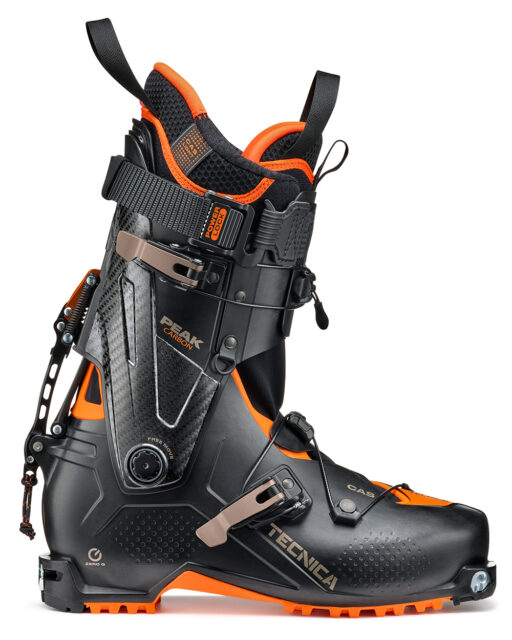
[First Look written by Drew Kelly; Full Review written by Paul Forward.]
Intro
As we discussed when it was announced at the beginning of 2022, Tecnica finally made an entrance into the world of very lightweight touring boots, in the form of their Zero G Peak series.
~1000-gram boots that have at least some explicit focus on downhill performance certainly seem like a growing trend these days — companies like Atomic, Scarpa, La Sportiva, Dynafit, and Salomon now all have models that fit this fairly ambiguous genre. In the past, we’d subjectively say that this “lightweight touring” boot category included boots weighing around 1000 grams to about 1350 g (size 26.5). They were bookended by the even lighter true “skimo” category (often <900 g) and the heavier, stiffer, “freeride touring” category (typically 1300–1700 g). Recently, for a variety of reasons, it seems all those classifications’ distinctive traits have begun intermingling.
Many folks have been using boots in the “lightweight touring” class as their primary or only touring boot because those boots tend to be a whole lot nicer on the uphill than heavier alternatives with more restricted ranges of motion. And easier uphill travel is a huge plus if you like to put in big days, get as many laps as possible, or just generally want to take some strain off the ascent (which, realistically, makes up 75%+ of a backcountry “skiing” day). With advancements in lightweight boot tech, brands like Tecnica are claiming that boots like the Zero G Peak Carbon offer fewer downhill-performance compromises than previous boots in this class (and especially the even lighter skimo-specific category). There is still a significant uphill and downhill performance gap between the ~1000-g and ~1300+ g classes, but the compromises aren’t quite as dramatic as they used to be.
And with the rise of fitness-oriented touring, particularly in avalanche-controlled resort settings, this class of boots is similarly appealing, offering efficient uphill performance for those who want to get in some low-impact exercise, while often still being stiff enough to carve casual turns back down groomed slopes.
So, what actually makes a boot like the Zero G Peak Carbon suited to all those types of skiing? Foremost are its low weight and the large range of motion provided by its cuff (stated at 75°). Other uphill-oriented features include its very breathable and thin liner, a trimmed-down buckle system designed to be lightweight on the uphill and efficient during transitions, lightweight carbon reinforcements throughout the lower shell and cuff, minimal heel and toe lugs, and low cuff height. But Tecnica says that downhill performance was still a priority with this boot, and the Zero G Peak Carbon adds some features not often seen in boots this light, such as a partial-overlap lower shell, carbon plate embedded in the sole for added torsional rigidity, and supposedly more easily punchable and grindable shell and liner.
All of this adds up to a boot that’s very interesting on paper, and one that seems to make it even harder to neatly place various ski boots into homogenous categories. Reviewer Paul Forward spent a lot of time in the Zero G Peak Carbon to see where it slotted into the touring-boot market, including many days spent with it on one foot and another boot from this class on the other. Before we get to Paul’s thoughts, here’s some more info about this new line of boots, and the Zero G Peak Carbon in particular.
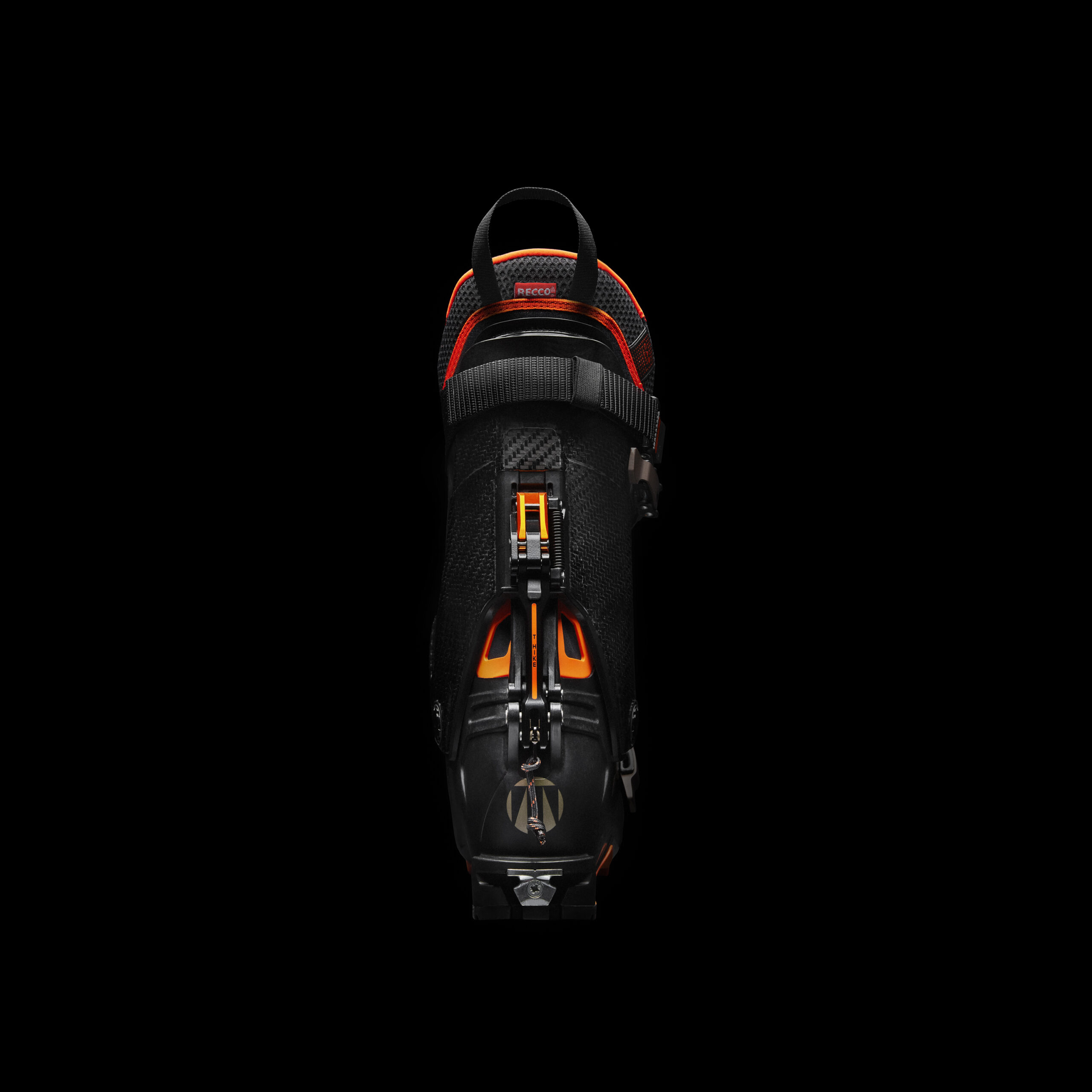
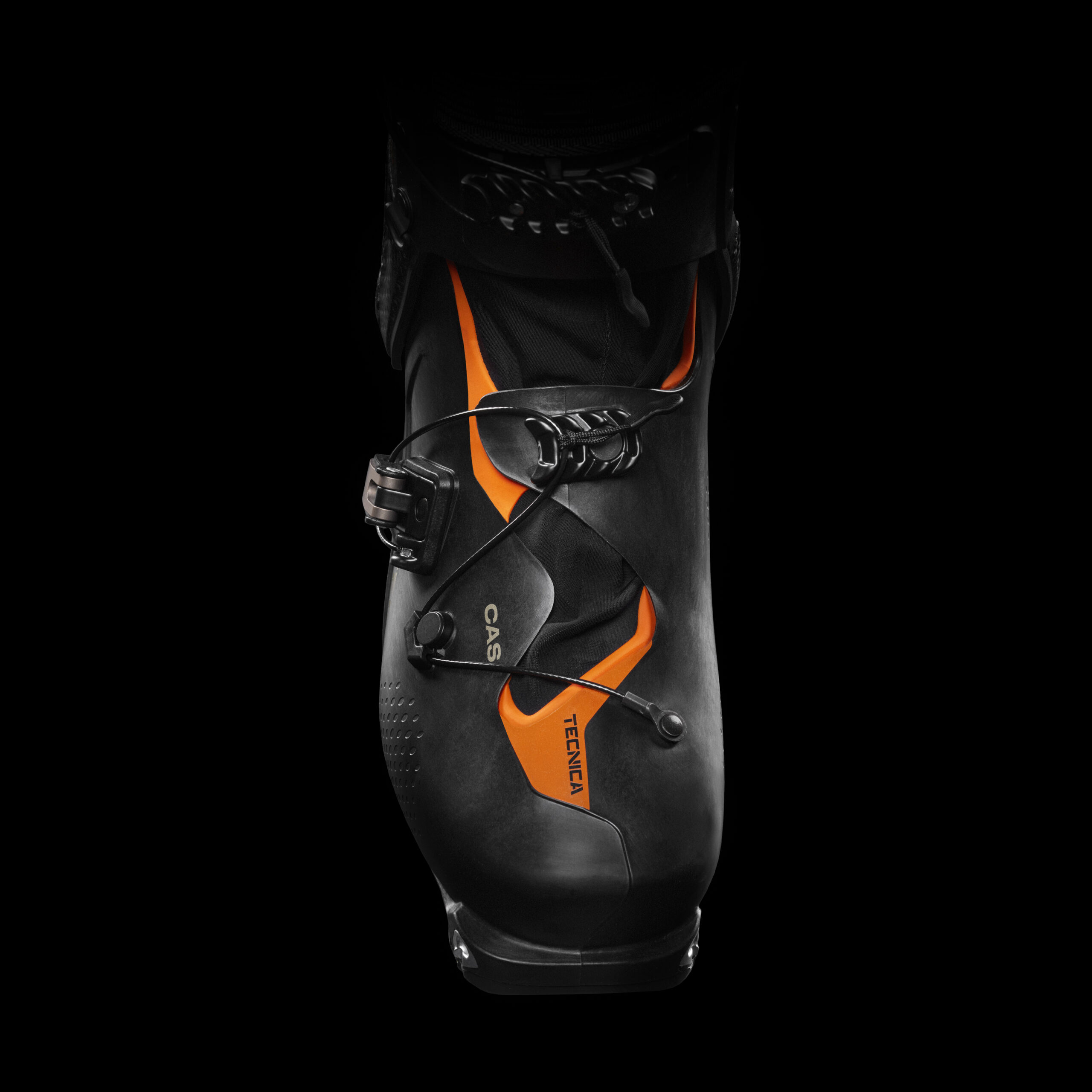
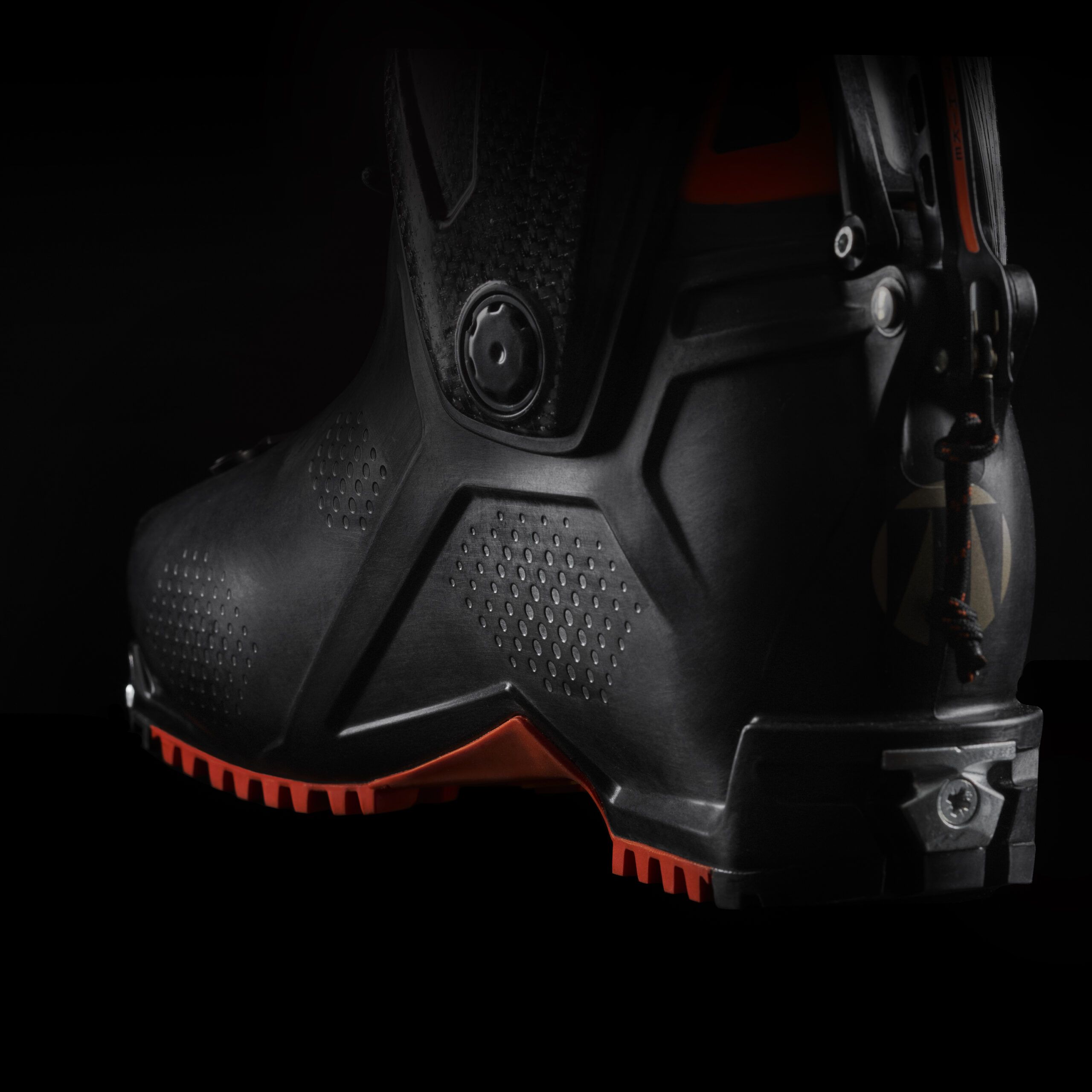
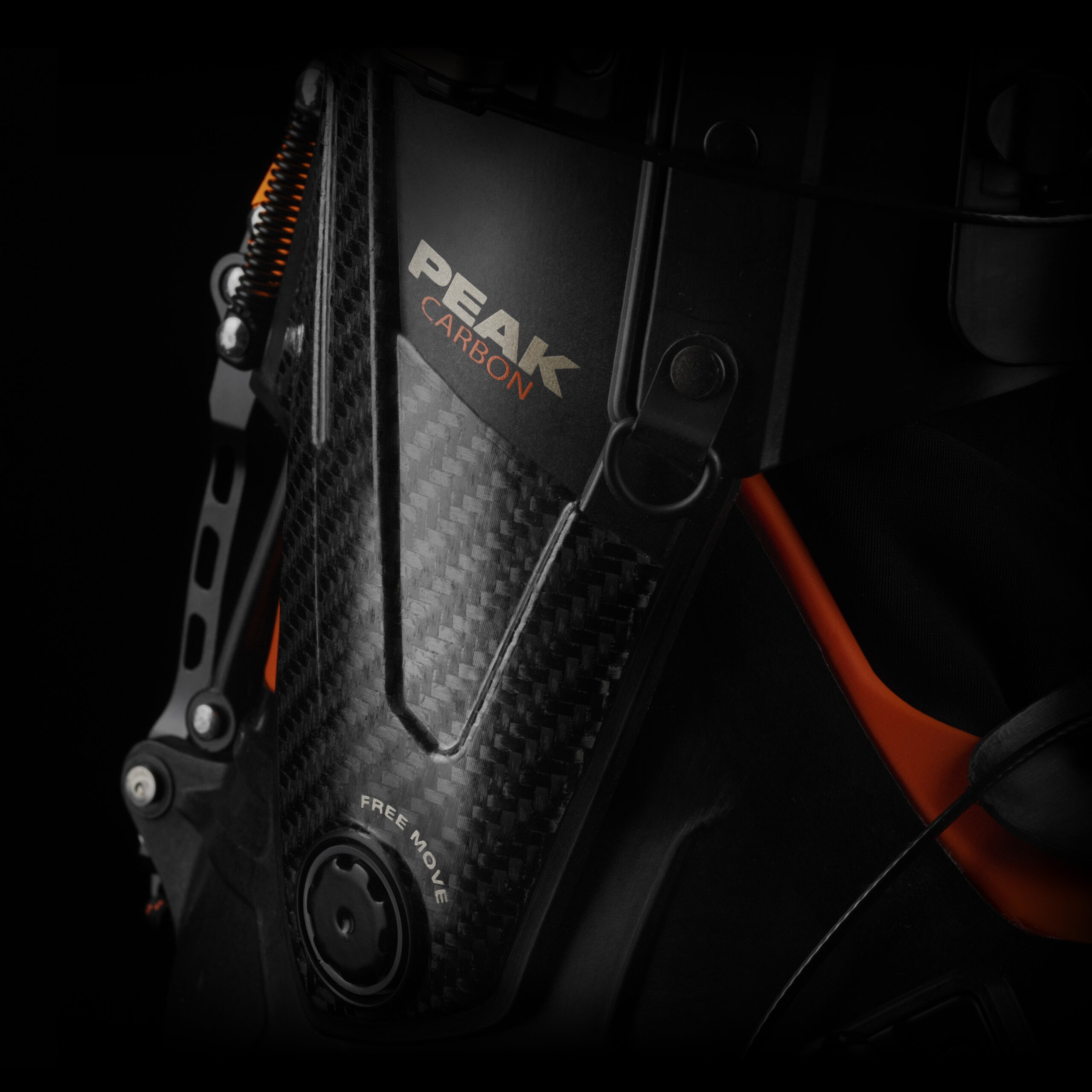
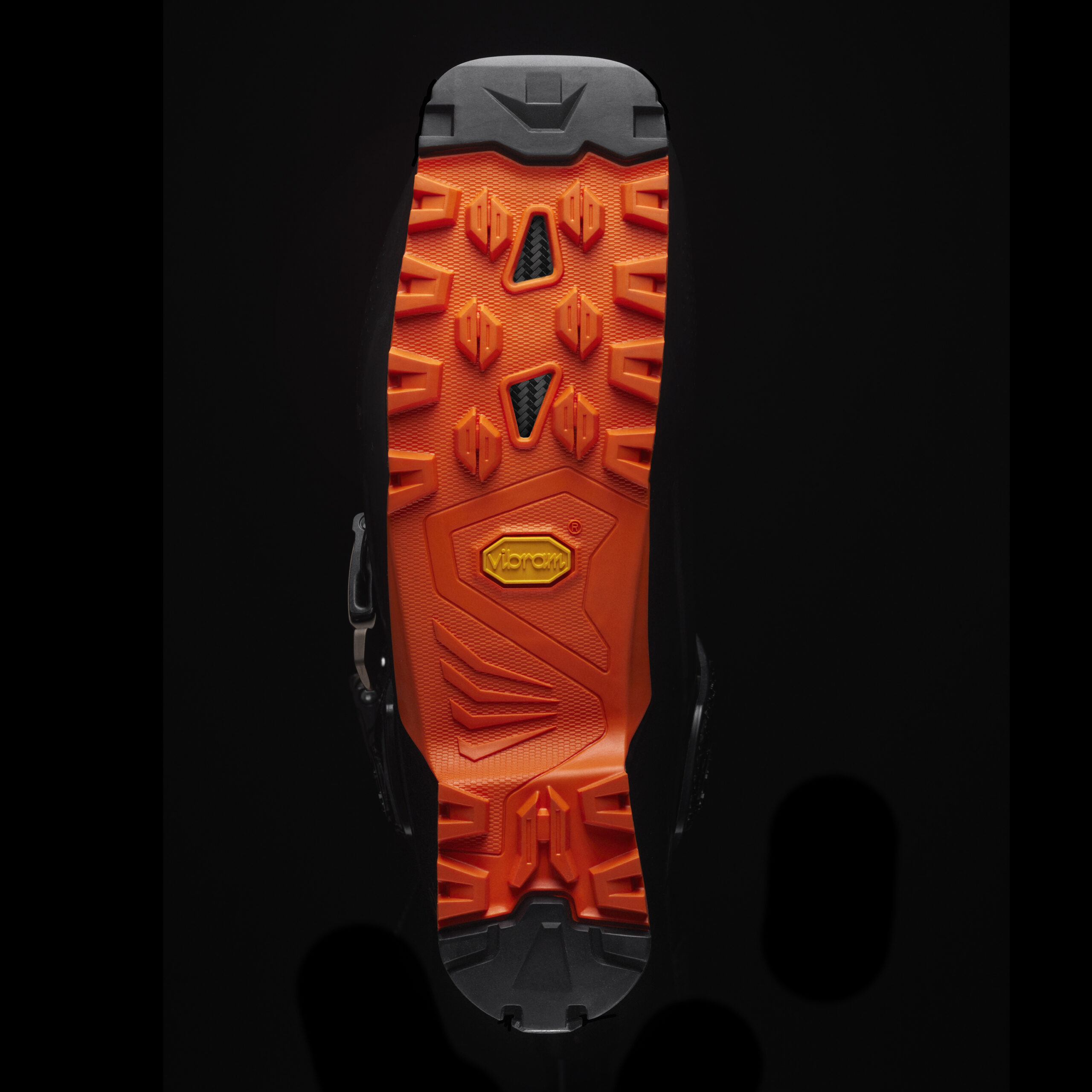
What Tecnica says about the Zero G Peak Carbon
“The Pinnacle. The cream of the crop. The Peak. Call it what you want, but rest assured Tecnica’s first sub-1000-gram touring boot lives up to its name. Born from our fit-and-performance-first ethos, the Zero G Peak Carbon is built to be extremely light and efficient on the uphill, yet maintain the power and downhill performance you’ve come to know and expect from a Tecnica boot.
Adapted from our experience in the alpine world, the Zero G Peak Carbon uses a semi-overlap shell design, allowing the boot to wrap the foot better which not only increases comfort but significantly improves downhill performance.
The Zero G Peak Carbon is a true light-touring boot built the Tecnica way – Fit to bag every peak on your checklist and out-ski your buddies on the way down.”
The Zero G Peak & Zero G Tour Series
The “Zero G” name has been in Tecnica’s lineup for a while now, historically being one of the most popular lineups of boots for backcountry skiers who place a high priority on downhill performance.
In contrast to the new Zero G Peak series, the longstanding Zero G Tour boots have been and continue to be midweight do-it-all touring boots that balance downhill ski performance and weight savings very impressively, but still with a clear bias toward downhill performance. They range from about 1300 g to 1500 g per boot for a size 26.5, with flex ratings ranging from 105 to 130. The Zero G Tour Pro has been a favorite of ours at Blister for several years in a row, primarily due to how it manages to combine a nice, pretty legit “130” flex pattern with a lower weight and better uphill experience than most similarly stiff boots.
The Zero G Peak boots, despite sharing a very similar name, are completely different — different shells, different liners, etc. The Zero G Peak series is much more uphill-oriented overall, with stated weights all around that 1000-g mark (size 26.5), and no stated flex ratings provided.
The Zero G Peak and Zero G Tour boots do share a stated last width of 99 mm and both series include “women-specific” and “men’s” models. Listed below are the stated weights, stated flex ratings (where applicable), and available sizes for the whole “Zero G” collection, ordered from softest to stiffest.
Women-specific (stated weights for 24.5):
- Zero G Peak W: n/a flex, 905 g (23.5–27.5)
- Zero G Tour W: 105 flex, 1380 g (22.5–27.5)
- Zero G Tour Scout W: 115-flex, 1275 g (22.5–27.5)
Men’s (stated weights for 26.5):
- Zero G Peak: n/a flex, 980 g (24.5–30.5)
- Zero G Peak Carbon: n/a flex, 995 g (23.5–30.5)
- Zero G Tour: 110-flex, 1505 g (24.5–30.5)
- Zero G Tour Scout: 120-flex 1370 g (24.5–30.5)
- Zero G Tour Pro: 130-flex, 1320 g (22.5–30.5)
It’s worth noting that the top-of-the-line Zero G Peak Carbon and Zero G Tour Pro are offered down to the same smallest size as their women-specific equivalents (23.5 & 22.5, respectively), despite being under the “men’s” category on Tecnica’s website. That’s noteworthy for those with smaller feet who are interested in the stiffer, higher-end options in either category.
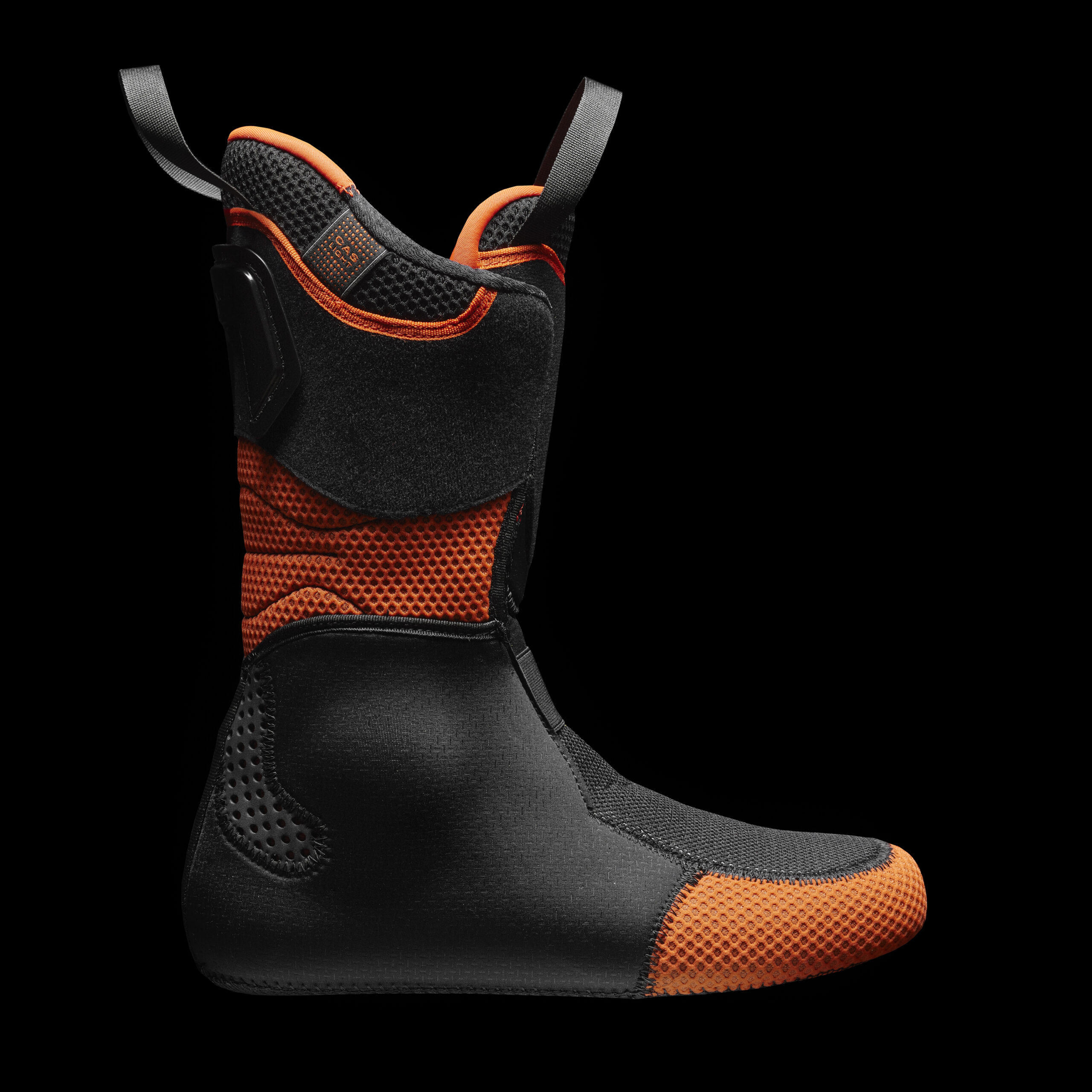
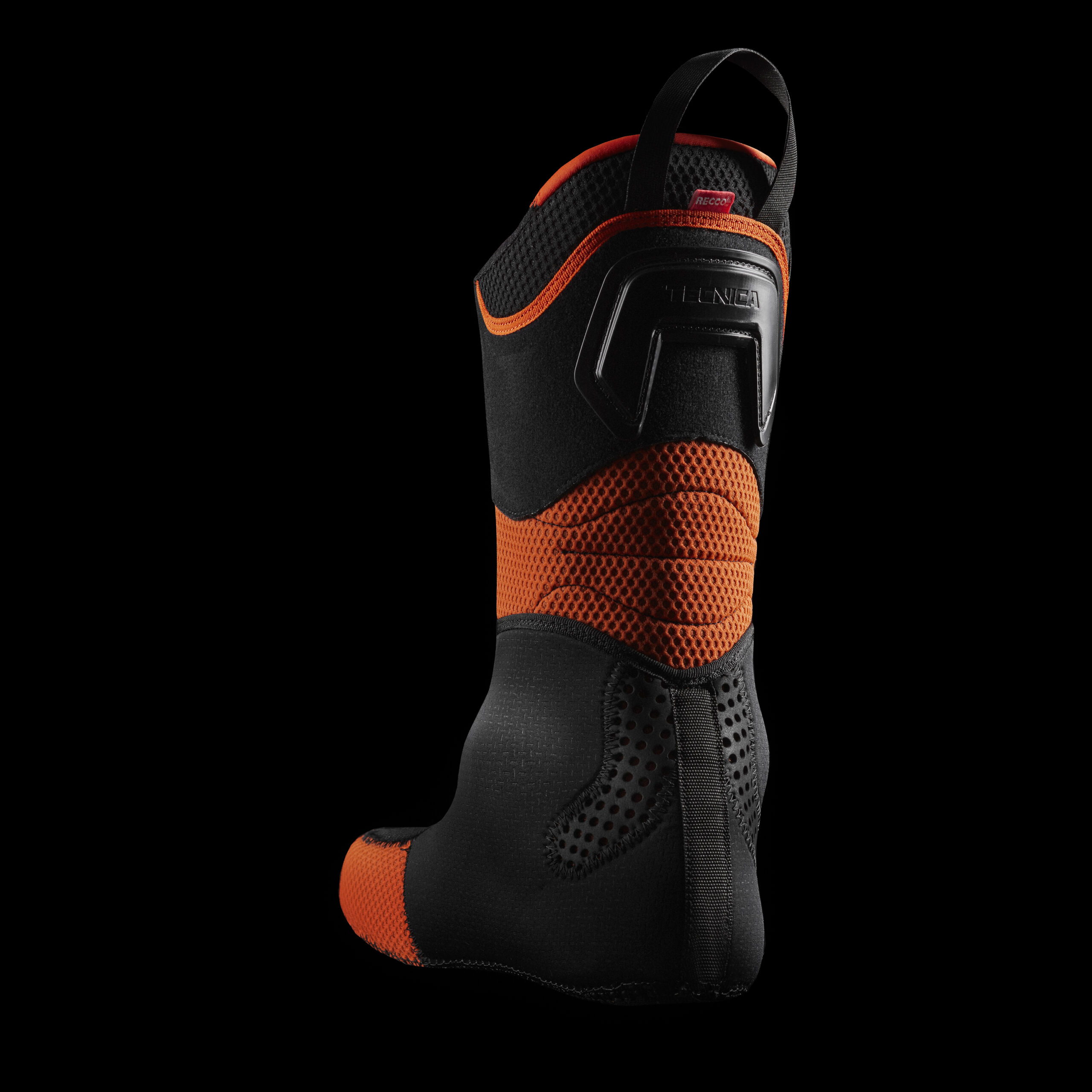
Weight & Comparisons
The Zero G Peak Carbon sits comfortably on the lighter end of the touring-boot spectrum; in terms of boots that weigh drastically less, it’s pretty much just skimo-specific, race-oriented options. Relative to the midweight class of “freeride touring” boots with stated flex ratings of 120+ (i.e., the bottom half of the list below), the Zero G Peak Carbon is at least 200-300 grams lighter. One of the Zero G Peak Carbon’s main competitors, the Scarpa F1 LT, comes in at a strikingly similar weight, whereas the Salomon S/Lab MTN Summit is just a bit heavier.
Below is a list of our measured weights for some comparable boots, organized from lightest to heaviest. For our measured weights, we list the weights of each shell + the weights of each liner, then the total weight of the shells + liners.
Scarpa Alien RS (28.0 / 27.5): 779 & 781 + 209 & 210 = 988 & 991 g
Tecnica Zero G Peak Carbon (27.5): 844 & 854 + 231 & 227 = 1075 & 1081 g
Scarpa F1 LT (28.0 / 27.5): 1106 & 1101 g
Atomic Backland Carbon (27.5): 882 & 884 + 228 & 230 = 1110 & 1114 g
Salomon S/Lab MTN Summit (27.5): 963 & 971.5 + 212.5 & 215 = 1187 & 1178 g
Salomon S/Lab X-Alp (28.0): 1010 & 1010 + 222 & 222 = 1232 7 1232 g
Fischer Transalp Pro (26.5): 1053 & 1053 + 262 & 263 = 1315 & 1316 g
Scarpa Maestrale RS (24.5 / 25.0): 1053 & 1057 + 244 & 245 = 1297 & 1302 g
Tecnica Zero G Tour Pro (26.5): 1099 & 1100 + 211 & 210 = 1310 & 1327 g
Dynafit Hoji Pro Tour (26.5): 1169 & 1174 + 214 & 215 = 1383 & 1389 g
Salomon MTN Explore (26.5): 1126 & 1135 + 281 & 281 = 1407 & 1416 g
Scarpa Maestrale XT (26.5 / 27.0): 1258 & 1258 + 247 & 252 = 1505 & 1510 g
FULL REVIEW
Fit
Paul Forward (6’0″, 200 lbs / 183 cm, 90.7 kg): As always, the “Fit” sections of our ski boot reviews are mostly meant to provide a general idea of the shell fit from our perspective — they’ll never aim nor be able to replace the guidance of a bootfitter. PLEASE go to an experienced bootfitter to figure out which boots will work best for your feet (and if you aren’t sure which shops / bootfitters to visit, check out our Blister Recommended Shops).
With that said, below is how the Zero G Peak Carbon feels on my feet. For reference, I’ve had a few boot fitters comment on my foot shape and the general conclusion is that I have:
- A fairly low-volume ankle and heel
- A higher than average instep / arch
- Good ankle flexion
- Moderate width across metatarsal heads
My experience with the Zero G Peak Carbon is that it has a fairly low-volume heel and ankle, medium to high instep area, and a medium-width toe box. My primary problem area in most boots is my instep; it has been the barrier that’s kept me from enjoying many boots in the past. After a quick liner mold with some extra padding over my instep, I found the Zero G Peak Carbon to be quite comfortable. As with pretty much all boots, I leave the lower buckle open when climbing, but I can buckle it for the descent and keep it closed, even for long, flat skates back to the car when needed. The heel and ankle are pleasantly low volume and I’ve only had a little bit of heel movement. In the Zero G Tour Pro, my main other issue was in the fifth metatarsal and “sixth toe” area; in the Zero G Peak Carbon, I did not need to do any work there. For what it’s worth, I’ve had pretty good luck punching Grilamid boots like the Zero G Peak Carbon, but make sure whoever does it has experience with these thin, light shells.
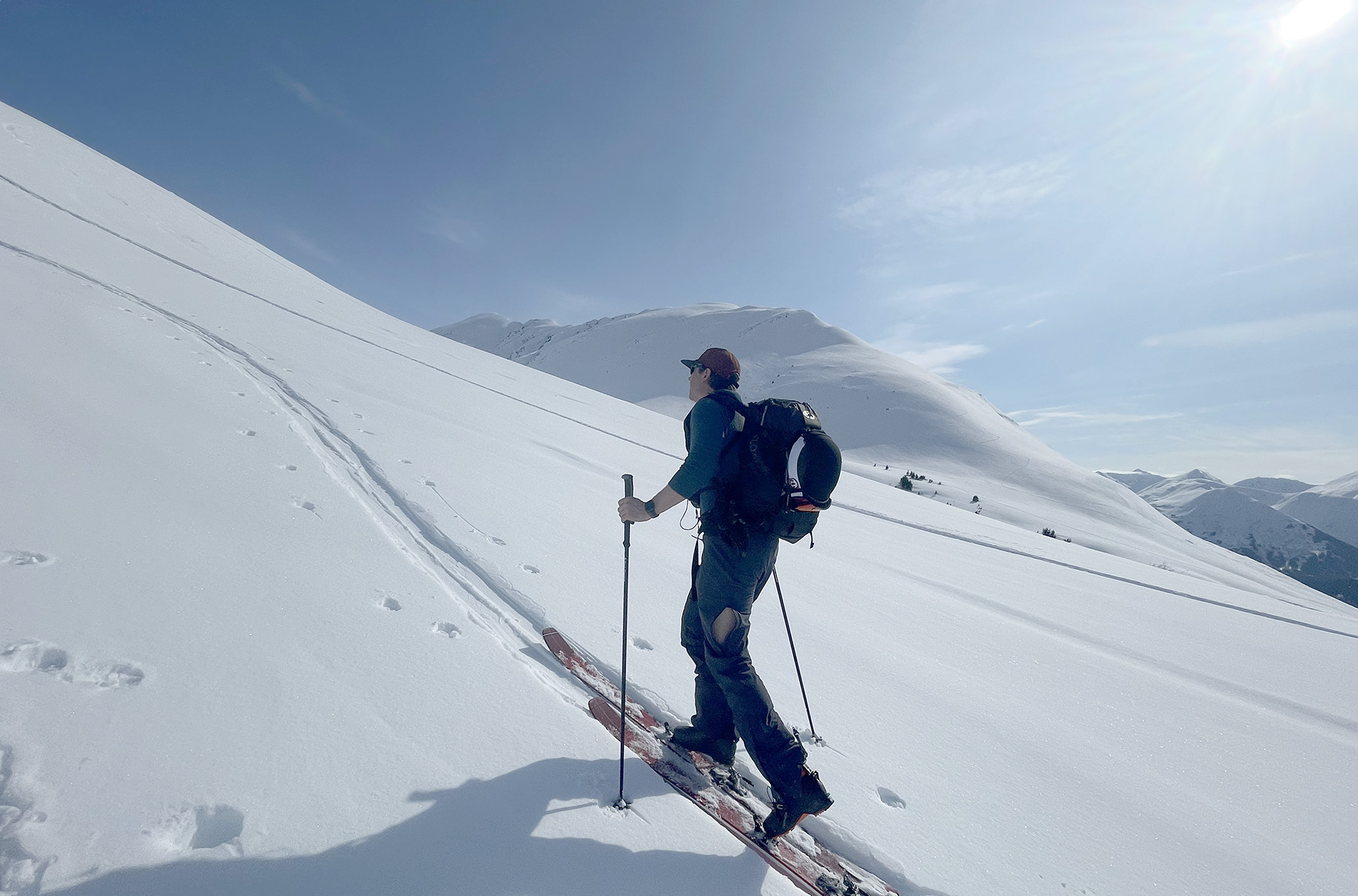
Fit Comparisons
As we’ll get into below, how a given boot fits your particular feet can play a huge role in how it will feel and perform. While that’s the case with any ski boot, I think it’s worth emphasizing for this class of 1000-1200-g touring boots, which I’ll cover more in the “Downhill Performance” section.
With that said, here’s how I’d describe the fit differences between several boots in this class, based on how they feel on my feet:
Salomon S/Lab MTN Summit: The MTN Summit feels a little shorter and has a little more instep pressure for me but, aside from that, it feels higher volume than the Zero G Peak Carbon everywhere else.
Scarpa F1 LT: I feel like the lower shell of the F1 LT is made for my foot — it requires nothing more than a quick liner mold to be perfectly comfortable. Relative to the Zero G Peak Carbon, the F1 LT feels a little tighter overall through the midfoot, but the forefoot and heel seem pretty similar to me.
Dynafit TLT8: This is a very different fit than the Zero G Peak Carbon and is higher volume throughout the entire boot.
Atomic Backland Carbon: I’m basing this on the 19/20–21/22 BOA version that I’ve used, but my understanding is that, aside from it being a buckle now instead of a BOA, the shell is essentially the same. Overall, the Backland shell feels higher volume throughout and a touch longer in the shell, compared to the Peak Carbon.
Tecnica Zero G Tour Pro: This boot is obviously in a completely different class. but since it’s Tecnica’s other touring boot, I’ll include it here. For my foot, the Peak Carbon feels more contoured to my foot shape, with a slightly closer fit through the heel and ankle and a touch more volume in the toe box. For my Zero G Tour Pro, I had to do 6th toe punches in both boots for long days of touring.
Uphill Performance
I’ve now been in these boots for the better part of a whole season, plus the late spring of 2022, and have already made some turns in them this year. Overall, the Zero G Peak Carbon continues to be one of the best boots I’ve ever used for long days of climbing and general travel in the backcountry. Its range of motion is more than adequate for any ski or binding setup that I’ve used.
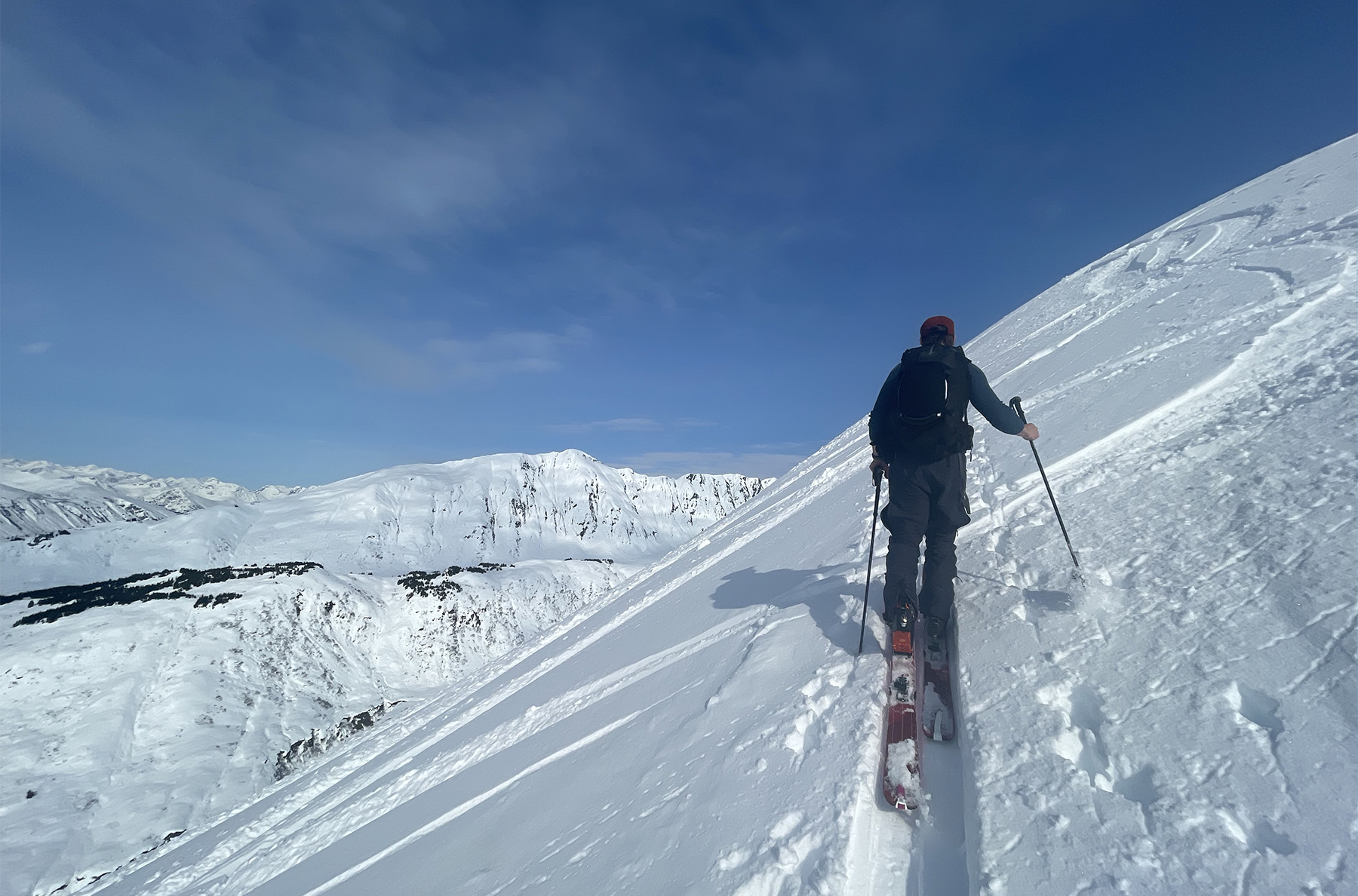
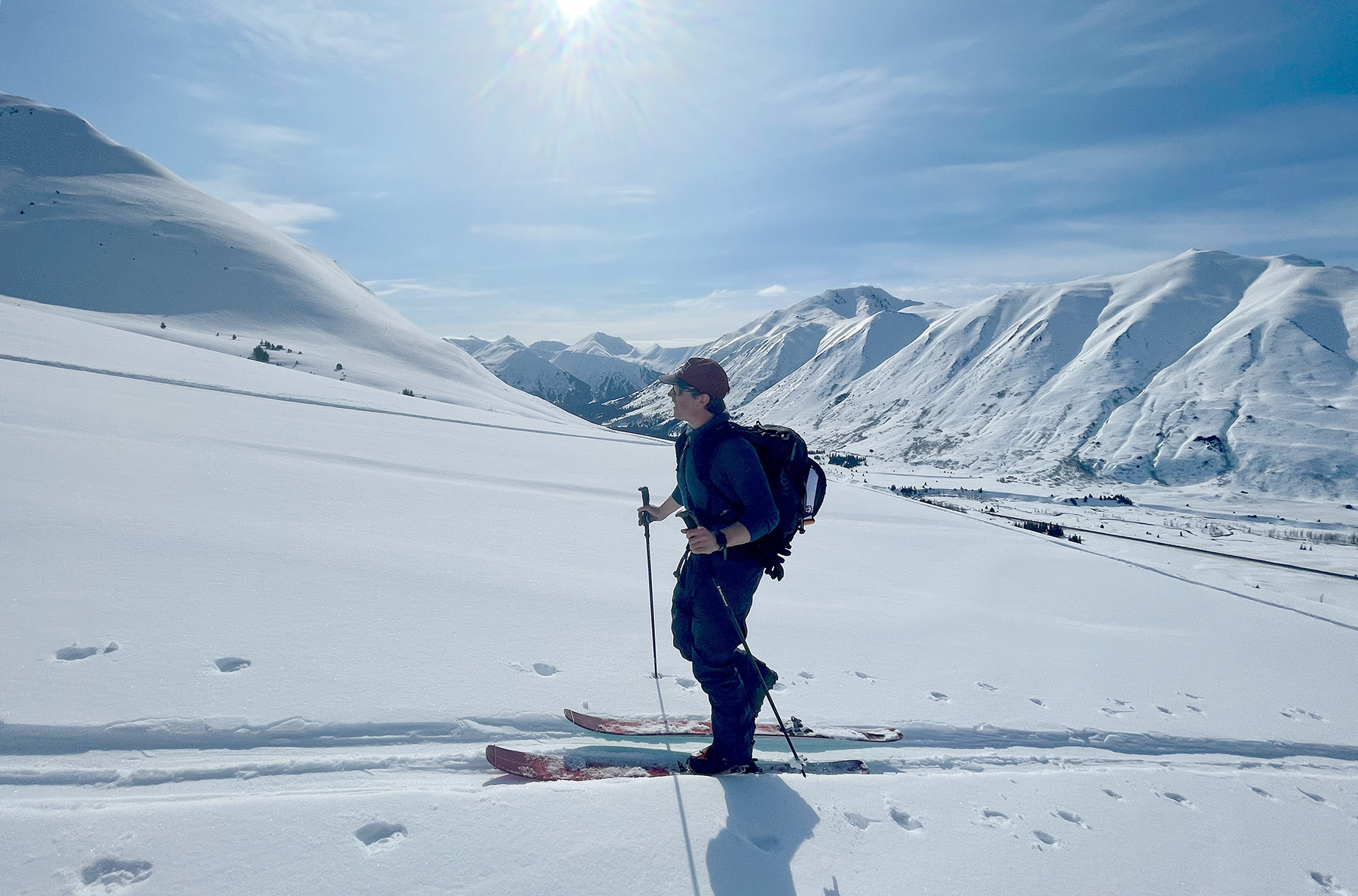
I’ve been spending more and more time on “race style” bindings that have very low heel risers, and even with little help in that regard from the binding, I’ve had little trouble ascending steep skintracks using the Zero G Peak Carbon. Overall, if this boot fits your foot, I think it will perform on the ascent as well or better than any non-race-specific touring boot on the market; I don’t have experience in the race-specific boot category, but if we exclude that class, the Zero G Peak Carbon is one of the most impressive boots I’ve used in terms of skinning / walking.
Transitions
I’ve done exactly one uphill / downhill race in my life and it was about 20 years ago — on telemark gear — so I’m definitely not someone who’s pulling out the stopwatch at every single transition. That said, I usually make a few laps when I’m out and I like a fairly quick and easy transition. All things considered, I’ve found the Zero G Peak Carbon to be one of the fastest and easiest boots I’ve used for transitions. Its buckles are easy to operate with gloves on, as are the power strap and walk-mechanism lever in the back. The Zero G Peak Carbon’s low-volume cuff is also pretty nice for pulling pant gaiters up and down as needed, with minimal drag / friction.

Of all the closure-mechanism combos out there, I think the Zero G Peak’s is my favorite. When wearing boots with BOA dials, I find myself loosening / tightening it at the top and bottom of every run; with boots with velcro strap / buckle combos, I’m always trying to get it in the right spot before closing the cam-buckle; and even with boots like Dynafit’s Hoji Lock models, where the closures are connected to the walk mechanism, I always end up undoing and redoing all the buckles anyway.
In the Zero G Peak Carbon, I flip two buckles, I only have to adjust the top one, and tightening / loosening the cam-style power strap is also quite easy. Kudos to Tecnica for their simple and solid closure mechanisms.
I’ll also mention here that the little secondary closure on the Peak Carbon’s walk mode (i.e., the little hook attached to the paracord) is much appreciated. On boots with more pared-down, simpler walk mechanism closures, such as the Atomic Backland or Scarpa F1 LT, I’ve intermittently had significant ice-up issues preventing the lever from fully engaging into ski mode.
Downhill Performance
When I wrote my initial Flash Review of the Zero G Peak Carbon, I had just skied a couple of runs with it on one foot and the Salomon S/Lab MTN Summit on the other. My impression after that experience was that the S/Lab MTN Summit offered a little bit more power for driving bigger skis in variable conditions. I maintained that impression throughout the remainder of that spring.
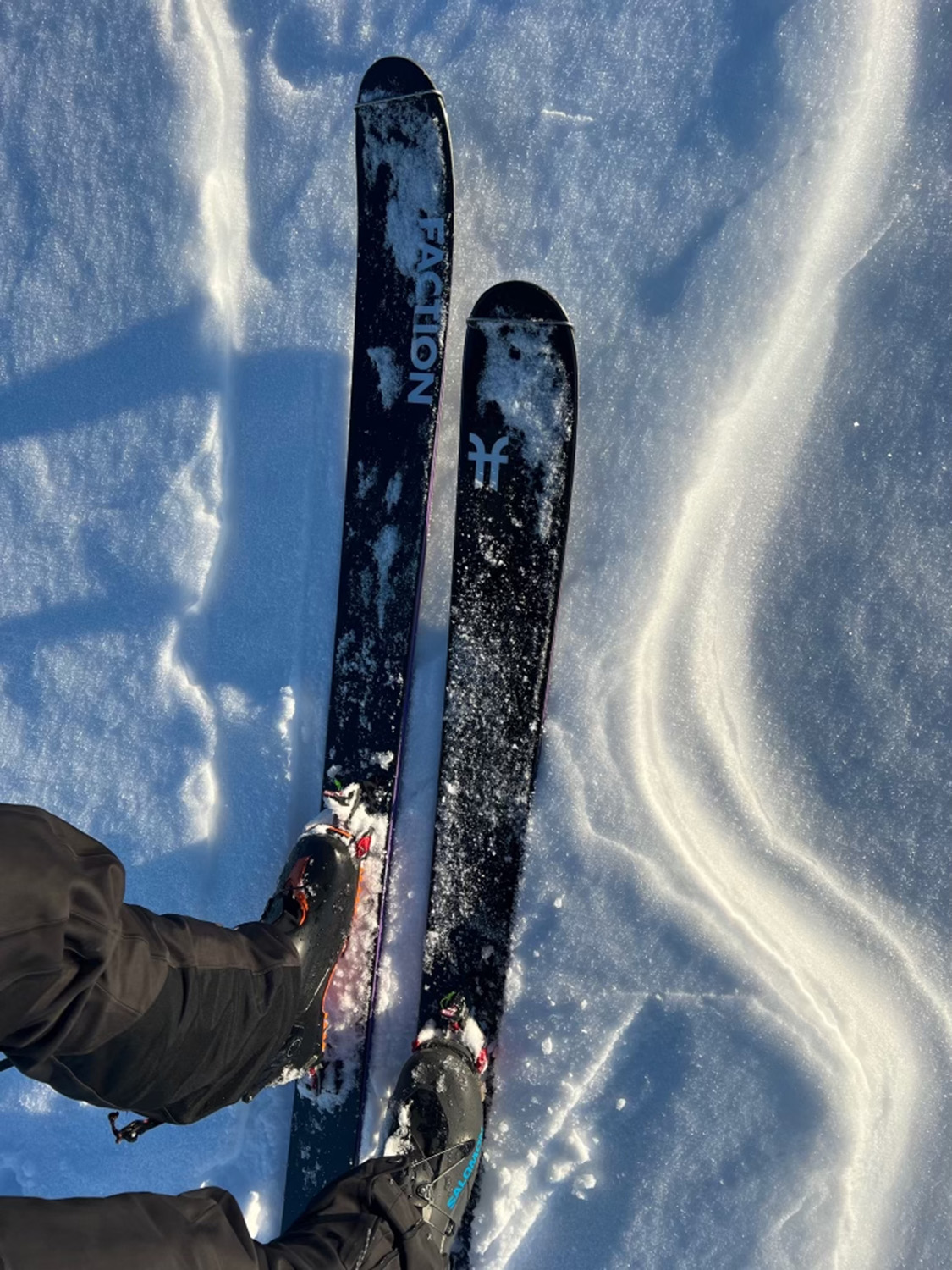
Then, last winter, I continued spending a significant portion of my touring days with the S/Lab MTN Summit or Scarpa F1 LT on one foot and the Zero G Peak Carbon on the other. I did this in all manner of snow conditions, and with skis ranging from 95 mm underfoot to over 125 mm underfoot. My primary takeaway is that the fit of the boots in this category matters much more than which model you choose. Throughout last season and the beginning of this winter, I haven’t been able to replicate the feeling that the S/Lab MTN Summit was a notably more powerful boot. The S/Lab MTN Summit may have slightly better damping characteristics and is maybe ~5% stiffer in terms of pure forward flex. But after many days spent with one of these boots on each foot and skiing all manner of snow conditions, I was not able to identify a dramatic difference.
For those who are not accustomed to this category of boot at all, I’ll try to provide some context, given the similarities between the models I’m discussing, and how different they are from most 1300+ gram “freetouring” boots. The Zero G Peak Carbon, S/Lab MTN Summit, and Scarpa F1 LT are all capable of skiing fairly fast on a large variety of skis. As a 200-pound guy who usually skis with 15-20 lb pack for ski touring, I can say that these boots have plenty of support for most of the skiing that I do. On big terrain (steeper, more open, higher speeds) and especially in more variable conditions, I can definitely find a speed limit with these boots; I feel less confident going very fast through runouts in them than heavier, more downhill-oriented alternatives.
Living in Alaska, I do have access to a lot of very consequential terrain; as a result, there are still days when I’ll opt for my stiffer, heavier, more confidence-inspiring Tecnica Zero G Tour Pro (or other similar boots). However, the goal for the vast majority of the ski touring that I do is spending a long day out skiing as much powder as I can in a wide variety of terrain. And for that type of skiing, I almost always opt for the Zero G Peak Carbon or something similar.
As I alluded to above, the times when these boots show the most vulnerability are in variable conditions. If the snow is refrozen, bumpy, or significantly choppy, I definitely have to pay more attention to remaining control and it’s easier to feel the need to slow down in boots like the Zero G Peak Carbon, relative to heavier alternatives. That said, for most of the time and for my preferences, the increase in comfort and the dramatic loss of weight on the ascent are well worth having to be a little bit more careful in certain situations on the descent. And in good conditions, I can ski almost as fast as I want in most terrain.
Durability
The shells of the Zero G Peak Carbon have held up well so far, with over 30 days of touring over the past three seasons. The Zero G Peak Carbon seems at least as durable as any other “lightweight” touring boot; still, they do have thin rubber soles and a minimalist construction, so rocky environments will take their toll, as with any boot in this weight class.


The only issue I had during my testing was that one of the Zero G Peak Carbon’s pre-production liners ripped internally while putting them on. Eventually, I received a pair of updated liners that apparently go out with the current version of the Zero G Peak Carbon and was able to finish my review. The new liners have stitching in different locations; I’ve had no issues so far with the new ones and don’t expect to, based on the design change.
Who’s lt For?
If the fit is right, the Zero G Peak Carbon offers the best performance-to-weight ratio of any boot in this class that I’ve used, making it a very compelling choice for those who want a light, efficient, and comfortable touring boot that can still ski pretty well (with my caveats, above, in mind).
That said, the marginal differences in performance between the Zero G Peak Carbon, Salomon S/Lab MTN Summit, and Scarpa F1 LT are small enough that fit should be the primary deciding factor. Weight and features should come second, and the differences in actual flex patterns should likely be the lowest priority since the top boots in this category have very similar flex patterns in the grand scheme of the boot market. In my opinion, these boots offer enough power for the vast majority of the touring conditions and skiing style that most people are doing, all while being very ergonomic and efficient on the ascent, and weighing notably less than the more downhill-oriented alternatives.
Bottom Line
After spending many days over the course of many seasons in many pairs of different lightweight touring boots, the Tecnica Zero G Peak Carbon has gradually become my go-to boot for most of my ski touring.
I will continue to emphasize that how the Zero G Peak Carbon (or any of its competitors) fits your particular feet should be your main focus when deciding on a boot in this class. But that aside, it’s an extremely efficient and comfortable boot on the uphill while still offering a level of skiing performance that’s very rare in the ~1-kilogram class.



Hallo…welche eigenschaften hat der zero g peak im steilen gelände auf der kante im schrägen bereich….lg arthur
Any thoughts on the Peak vs the Peak Carbon? How big of a difference does it make in how the boot skis?
In the Skialper test, they say it’s just a hair softer, not a big difference and probably skis better for people who are not very heavy and tall.
Awesome! Would be cool if yall could get on the new skorpius from la sportiva. I used to use a zgtr and the skorpius really is just so much better for me and my use case – walking a long time, transitioning frequently, skiing decent snow in mellow terrain. The ROM is amazing, even with the top velco buckle attached and hooked, so all it requires is a single closure to transition + the ski to walk mode lever. I leave the boa moderately tightened for both up and down and removed the power strap. Skis nicely as well! Annoying to get in and out of for sure though.
Thanks Edward! I would love to ski the Skorpius and will keep trying to make that happen.
Any notes on relative fit of this shell?? And can the carbon infused grilamid take a punch?
Thanks!
I’m also interested in fit notes, especially as compared to the Salomon. I realize that the only way to really understand is to try it on my foot, but I’m curious as to how Tecnica lasted this boot even though I’m not in the market right now.
The challenge with punching Carbon-infused Grilamid is that it requires a lot of heat, and there is a somewhat narrow window between the heat-deflection and melting temperatures of the material. For Grivory’s 30% carbon LC 3H material HDT-C (the lowest rated deflection temperature at 8 MPa stress) is 125C and it melts at 178C (https://www.emsgrivory.com/fileadmin/ems-grivory/documents/brochures/3001_en_Grilamid-L-PA12.pdf). So the real question becomes: How good is your boot tech at applying heat to manage temperature within that window?
Trying to clarify what I said: “Punchability” isn’t a simple yes/no binary.
Every thermoplastic, even carbon-reinforced ones, has combinations of stress and temperature in which it will plastically yield without rupturing (from too much force/stress) or melting (from too much temperature). The operative question for any given material is how close to one or both of those adverse outcomes you have to work, and that determines how tightly you have to control both force and temperature to get the job done. For “realistic” bending forces Grilamid+carbon forces you to work very hot (and somewhat close to the melting temperature) to get the job done.
So I’m sure there are some boot techs out there who find they can work with it, and others who are afraid to touch the stuff.
Patrick, when tried the Salomon and the ZG peak on, they fit completely different. I would have a hard time imagining that anyone would be able to ski both of hem.
So exactly what part of Paul measures 6″?
(somebody had a “Stonehenge Moment” entering his personal stats at the top of the review)
Paul, how was walking on flats with them?
When I tried them on, it seemed like the back of the lower shell came up quite high. It felt like that was pushing my foot forward when pretend skinning on the flat.
Did you have any issues with that?
It sounds like you didn’t compare them to the Backland Carbon boots?
The Zero G Tour Pro is probably one of the best skiing boots in its weight class because of its high cuff and relatively progressive flex but it also has the worst walk mode. Yeah it walks better than 4-buckle boots but the rearward ROM is horrendous compared to any other boot under 1300g. It is especially bad at walking in relatively flat terrain. There are much beefier boots out there now like the Atomic Backland 120 XTD that manage to walk significantly better than the Zero G Tour Pro.
Ben, it sounds like you are talking about the Zero G TOUR ? This review is for the Zero G PEAK. Confusing naming, just like Atomic’s Backland.
If you are talking about the TOUR I agree, got rid of it for that reason.
You are comparing Zero G Tour Pro with Atomic Backland 120 XTD – but they are IMO not in the same category. Yes – they have similar weight but construction wise Backland is similar to Zero G Peak. I havent read review on Backland but although it walks significantly worse, i bet it skis significantly better than Backland. Looks like we have a new category between lightweight touring boots and free touring boots – Backland is uphill oriented boot in that category and Zero G Tour is downhill oriented boot in this in-between category :)
Paul, it’s amazing how much your foot sounds similar to mine. After struggling with so many different boots, I ended up picking up a pair of these boots last season and spent about 20 days in them. I ended up finishing the Gothic mountain tour in them as well, and would like to make a few comments.
First, entry into this boot is very difficult. For those of us who have a high end step and limited ankle flexion, getting in and out of this boot is quite difficult. Even more so if you upgrade the liners. I ended up making the mistake of doing an intuition wrap liner. I have a pair of the intuition wraps in my standard Zero G tour boots. While I’m able to get in and out of those, the wrap liner in the Peak makes it a total struggle getting in and out. I would strongly encourage if anybody buys this boot, and eventually upgrades the liners to purchase a pair of liners that has a tongue instead of a wrap.
Second, the progressive flex or lack thereof in this boot. You mentioned that in this kind of boot flexion is one of the least important things. However, I do think it warrants mention: this boot is not a progressively flexing boot. You get in it, and you are almost immediately hit its limit. I agree that for what this is designed to do, that’s appropriate. However, if you have another more free ride oriented pair of tour boots, it is quite the difference. I met you last year at the Blister Summit (and hope to see you again this year) so I know you are a bit taller and more muscular than I am. So maybe you have a different opinion/feel it is a bit more progressive but for me, it engages immediately.
Finally, the durability of this boot. On this day (1/9/2024), I have totally destroyed this boot/irreparably broke apart off of it. I’ve never had a boot fail in this manner, and was shocked when this happened. The failure I believe is due to the incredibly tight throat. I was simply putting the boot on and the combination of the gasket/gaiter combined with the plastic island the buckle clamps onto has lead me to open the upper boot completely during entry. I was spreading the buckle/island to get my foot in, and it snapped clean off at the base in my hand. Wish I could attach a picture. Unfortunately, the boot is just over a year old and so out of warranty.
Anyways, I do feel one of the key drawbacks is the difficulty of entry. For that reason alone while I am frustrated, I am not devastated that the boot is non-usable at this point. While I am going to attempt a warranty claim, I will definitely be looking for a similar light touring boot in the 100 mm last. This time, ease entry will also be high on my list. Hope you are having a great season up there and hope to see you again at the Summit!
Dano, have you picked the same shell size as the ZGTP? I did and I feel like I might have made a mistake with the boot being too small for me (I run 28.5 ZGTP and they’ve been perfect for years) – the 28.5 feels too small after a couple weeks, but initially I thought that 29.5 would be way too big for me.
Would you drive a QST Echo 106 with these?
As for Dano Monticelli comments, I could not agree more. I just purchased this solely for skimo, fast uphilling. The boot is next to impossible to get on and even hard to get off. When taking them off, I have to pull the liner out of the shell in order to get my foot out of the boot. I was thinking of cutting the instep strap on the line, which should make it easier but then the tongue could potentially come out of the boot.
Any other suggestions on make this boot easier to get on and off would be appreciated.
Thanks.
Hmm, I tried this boot on a lot (ordered on line and tried it at home for a few days), and although I wouldn’t say it was easy, I also did not notice it being very hard to take off.
I have a high instep, but flexible ankles and narrow feet.
I was using a Palau Power Lt liner: a bit thicker than the stock liner, but still a tongue liner with a good hinge in the back, and broken in and heat molded for me.
Rob Coppolillo, writing on Powdercloud also used a wrap liner and complained about taking it off.